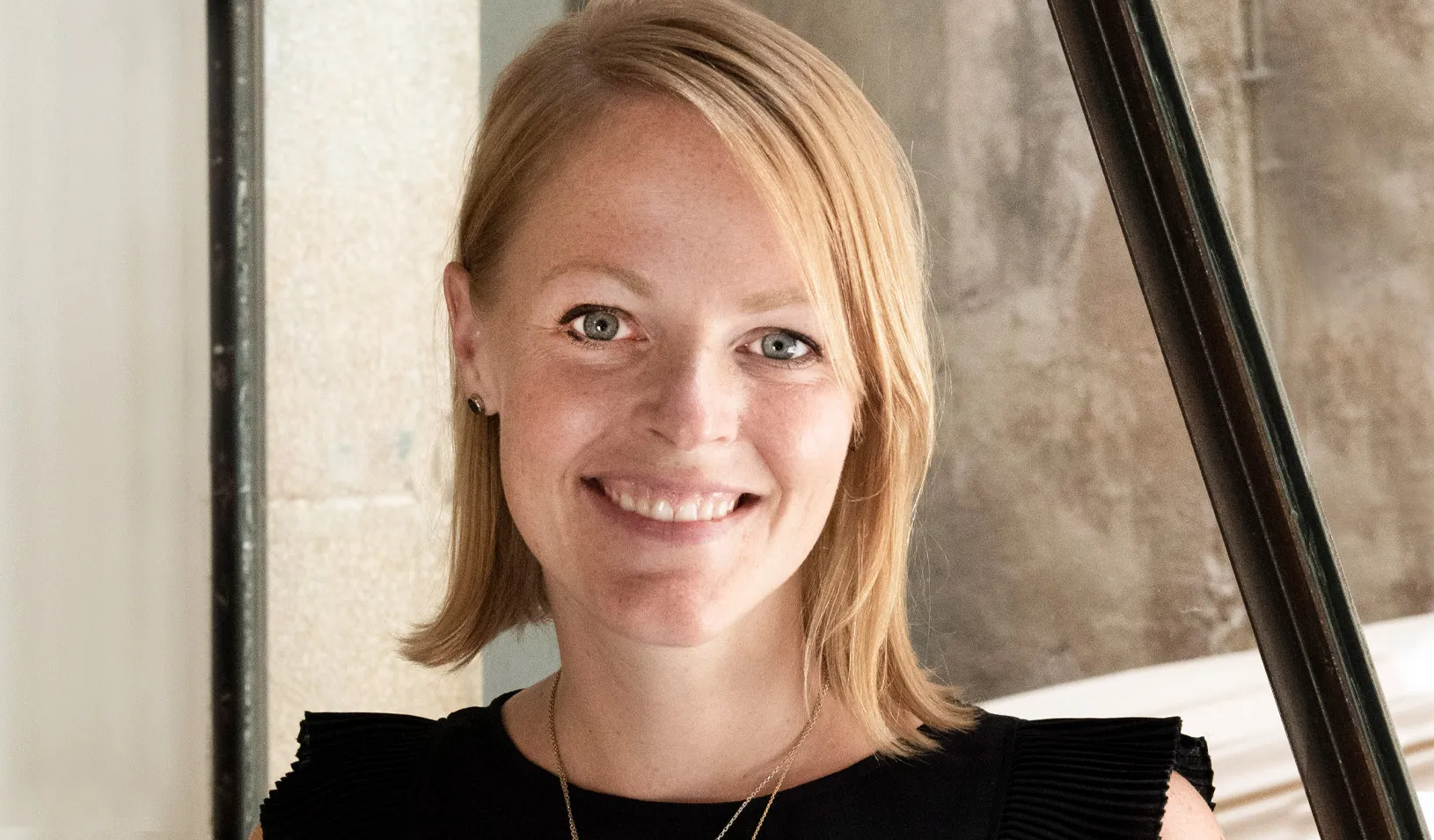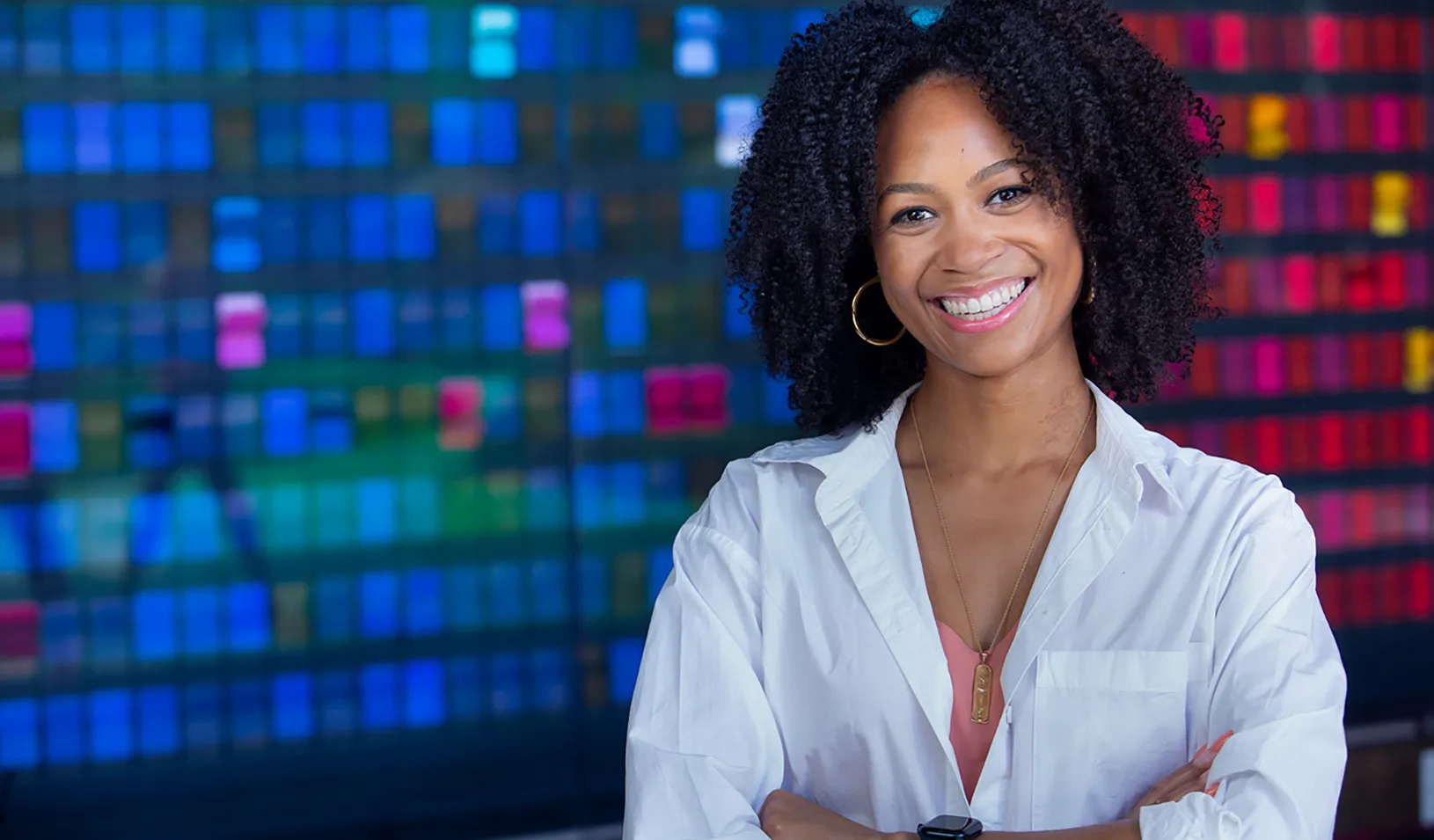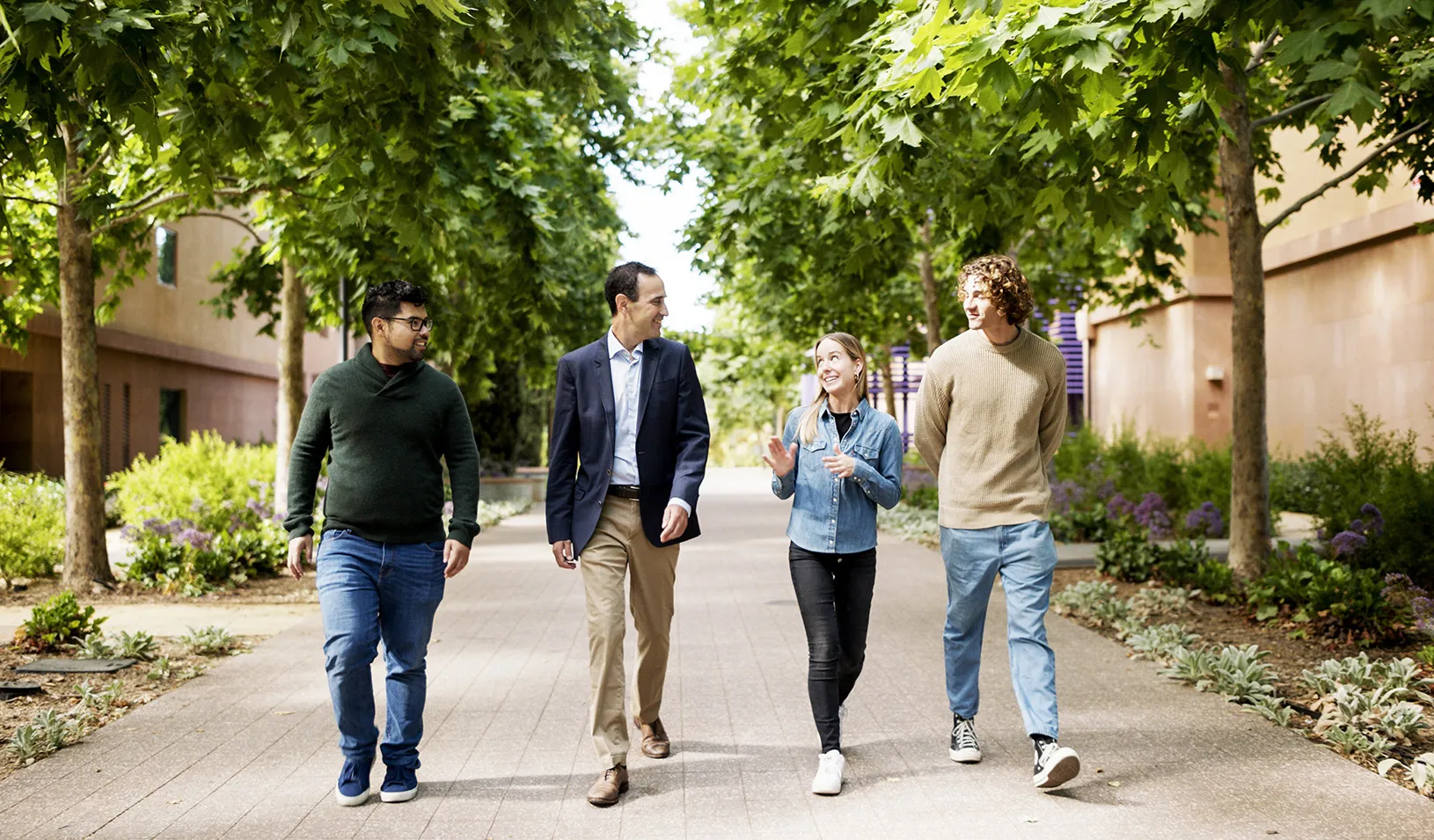"An Intergenerational Transfer of Education"
C-suite leaders challenge MBA students to lead under pressure.
December 13, 2012
Wearing black suits and chanting “we will rock you,” as if to overwhelm opponents, nearly 400 first year MBA students start their day on a mission. They soon meet their match, however — nearly 200 high-ranking executives come from near and far to test the younger men’s and women’s leadership mettle.
This is the Executive Challenge where alumni and students role-play tough leadership situations. A December event in its 7th year at the Stanford Graduate School of Business, it is a not-to-be-missed affair for some very busy people.
“I come because it’s tremendously fun to feel the energy from the students,” said Himanshu Choksi, MBA ‘89, managing director of venture capital firm Pacifica Fund, not far from campus.
“It jazzes me,” added James Craft, MBA ‘83, an antitrust lawyer who flew in from Phoenix where he is a partner in the law firm Gammage & Burnham. “Hopefully, I’m providing some feedback that makes a difference to the students, and I also learn from this that I need to listen better.”
“I come to see how the students are doing and to find out what’s going on at the GSB,” said Ashley Leeds, MBA ‘84, a partner at RIME Communications Capital in New York.
The event is “a safe place for students to take risks, to stretch their thinking,” added classmate Emily Maddox Liggett, CEO of NovaTorque Inc. in Fremont, Calif.
“It is intergenerational transfer of education at its best,” said school Dean Garth Saloner.
From the students’ point of view, the personal advice is taken in deeply because of the source, said MBA student Gabriel Dobbs. “These people who role-play with us have been in a lot of boardrooms and dealt with so many tough situations.”
Take for example, the advice from serial entrepreneur Steven Aldrich, MBA ‘95, who took a day out of running Outright Inc., which he just sold to Go Daddy, because he said he likes to repay the favor of older GSB alums who helped him get his first company started. After a role-playing session where he was an observer while two students worked to get an approval from four alumni board members, Aldrich was concrete with his advice.
“You got each board member’s feedback. That was very good,” he told the students. “But you went down to a gnat’s eyelash on answering some of their questions. You can stop part of the way, say ‘Here’s the rough idea,’ and ‘Can we get back to you on that if you need more?’”
The challenge, organized by the school’s Center for Leadership Development and Research, also includes communication judges who use different evaluation forms to give students feedback on communication style. One of them is Matt Abrahams who teaches communication electives at the business school. He suggested to one student team that they pay more attention to the alums’ body language. If you are presenting to someone who leans forward, he said, verify that he or she is going along with your plan. If another person leans back, try drawing out their objection.
Formally, the Executive Challenge is the culminating event for the first-year-MBA, fall-quarter curriculum. It gives students a chance to practice what they have learned in all their required courses but especially in Leadership Labs, said student Anita Yiu, a former Bain consultant, whose role-play was the last of the day, which gave her plenty of time to worry that she might “blow up the meeting.” As part of a six-person student squad, she also got a chance to watch her teammates perform earlier role-plays and hear the advice given orally to them by judges afterwards. Second-year students who serve as Arbuckle Leadership Fellows also guided the student squads between role-plays to find larger lessons from the individual feedback, said Sophie Farrell, one of the fellows.
“What’s distinctive about this program is that we are not standing up and lecturing them on leadership, and we’re not bringing our idea of great leaders in front of them,” Dean Saloner told the alumni, most of whom graduated before the GSB implemented its current MBA curriculum. “We are taking them in squads and putting them through exercises that are very carefully chosen and orchestrated with coaches and support staff to help them develop the skills they will need to become change agents. That’s what our program is about. That is why this course is so pivotal and why we are so appreciative of your coming and helping us do it.”
The Leadership Labs course is designed to help students answer the question, “Why should anyone follow you?” said Professor Larissa Tiedens, senior associate dean for academic affairs and director of the leadership curriculum. It requires a different approach from a leadership course that ask students to analyze other great leaders, she said, and it reinforces the idea that ‘to be a great leader, requires being a great learner.’”
The Executive Challenge has become a yearly high point for students and the school as a whole because many staff and faculty are engaged in pulling off the event, Dean Saloner said.
“It is at the core of what we are doing in leadership, at the core of the new curriculum, and at the core of our broader mission of trying to educate a small number of men and women who we think can change the world.”
By Kathleen O’Toole
For media inquiries, visit the Newsroom.
Explore More
Erin Nixon Joins Stanford GSB as Assistant Dean of Admissions

Nia Rose Froome, MBA ’23: Making Local, Fresh Food Available for All

New Research Fund Promotes Responsible Leadership for the Next Century
